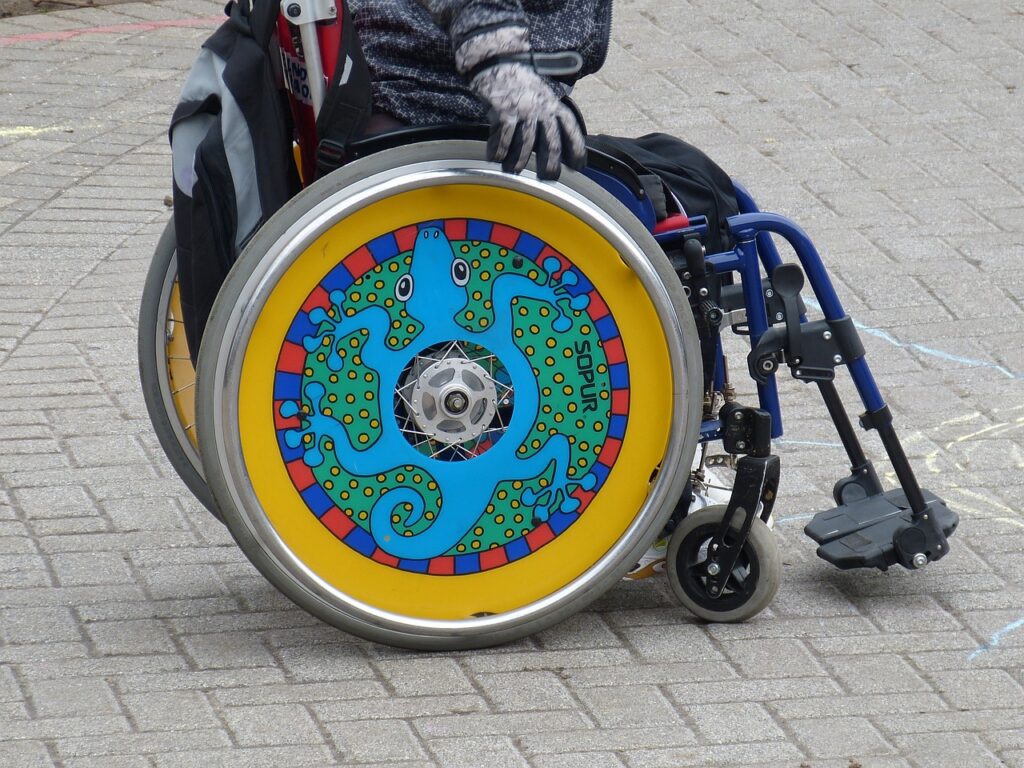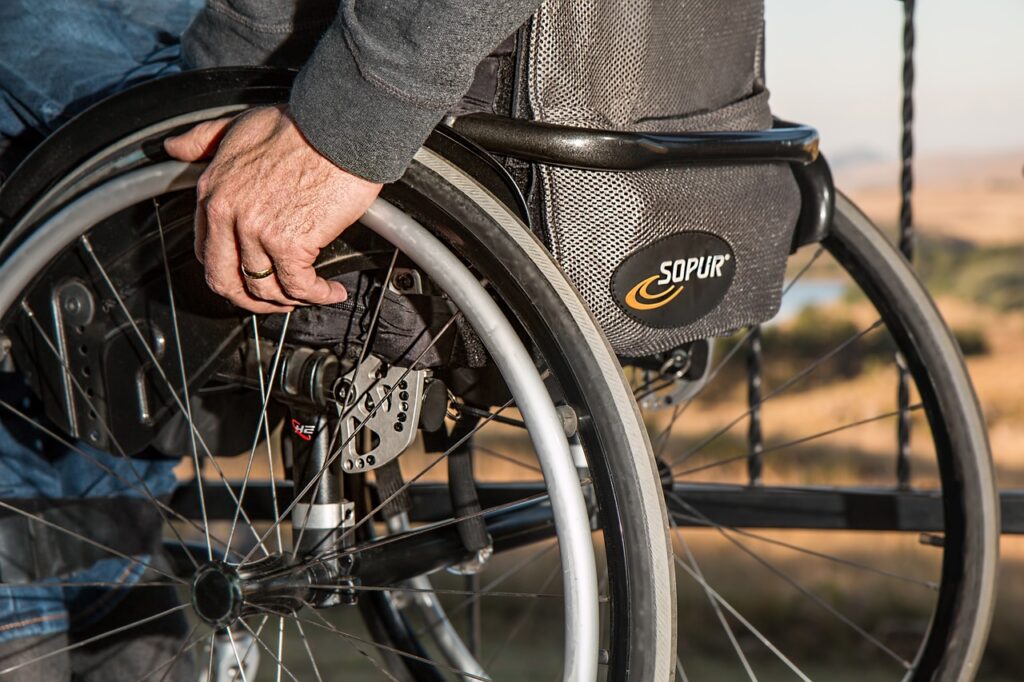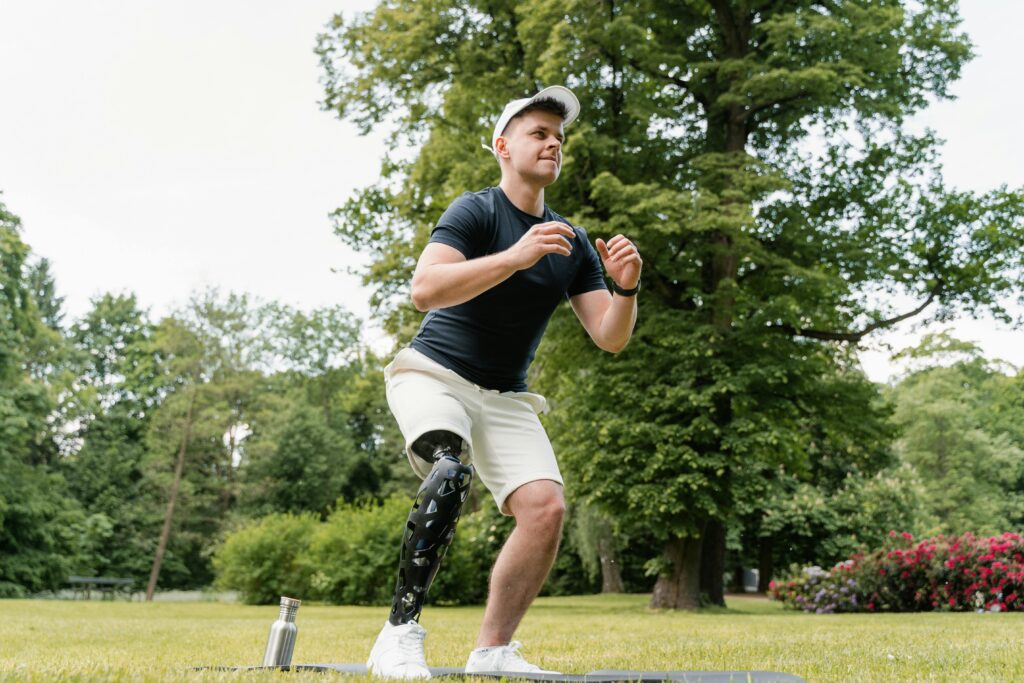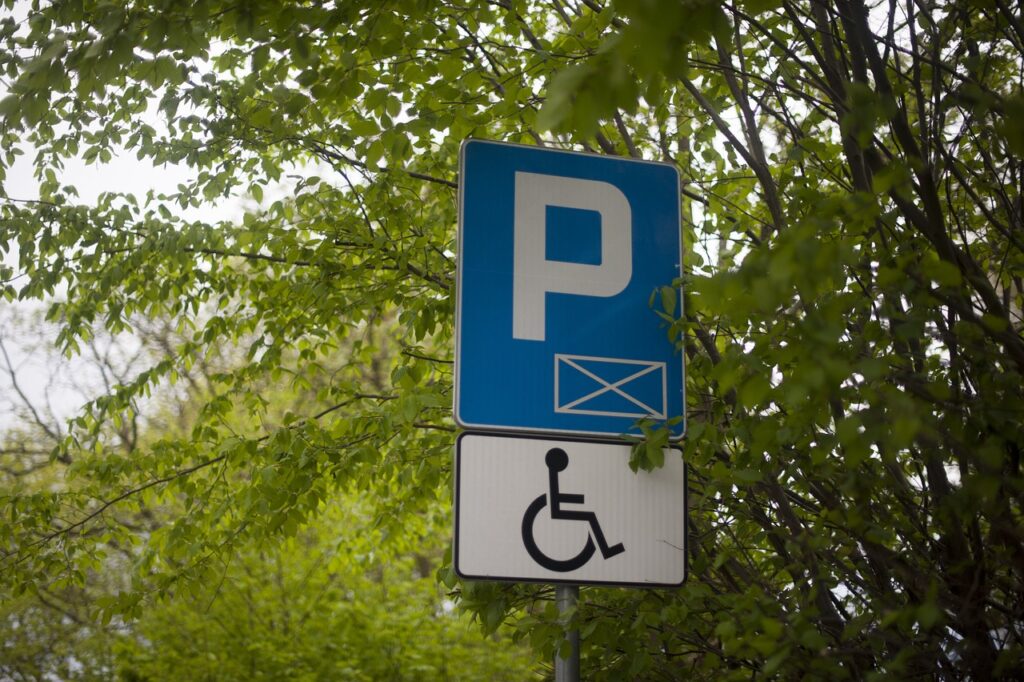Handicap parking laws play a crucial role in ensuring accessibility and inclusion for individuals with disabilities. Over time, these laws undergo changes and updates to better address the evolving needs of the disabled community. In this blog, we’re diving into the latest updates on handicap parking laws, regulations, and advancements in handicap parking legislation across the United States.
Latest Updates on Handicap Parking Laws:
Handicap parking laws are subject to frequent updates and revisions to reflect changing societal norms and advancements in accessibility standards. S
These updates may include amendments to existing legislation, revisions to permit requirements, and enhancements to enforcement mechanisms. Additionally, updates may address emerging issues such as the proliferation of electric vehicles and the need for charging infrastructure in handicap parking spaces.
Some jurisdictions may also introduce measures to enhance accessibility in private parking facilities, such as requirements for accessible parking in commercial developments or multi-family housing complexes.
Updates can also reflect advancements in technology, such as the adoption of digital permits or the integration of accessibility features in parking apps.
Handicap Parking Regulations Changes:
Changes in handicap parking regulations encompass a wide range of modifications, including adjustments to parking space dimensions, signage requirements, and permit eligibility criteria.
These changes may involve adjustments to parking space dimensions, signage requirements, and enforcement protocols to ensure compliance with accessibility standards. Additionally, regulations may evolve to address emerging challenges, such as the increasing demand for accessible parking in urban areas or the integration of technology to improve enforcement and monitoring.
Some jurisdictions may also introduce changes to permit eligibility criteria or renewal processes to streamline administrative procedures and enhance user experience. Changes in handicap parking regulations may also reflect input from disability rights advocates, stakeholders, and community members to ensure that parking facilities remain inclusive and equitable for all.
Handicap parking regulations changes underscore ongoing efforts to create environments that prioritize accessibility and foster inclusivity in public spaces.
Tracking Handicap Parking Legislation:
Tracking handicap parking legislation involves monitoring proposed bills, regulatory amendments, and legal rulings related to handicap parking.
This process includes staying informed about legislative initiatives aimed at enhancing accessibility, improving enforcement, and addressing emerging issues related to handicap parking. It involves actively engaging with lawmakers, advocacy groups, and stakeholders to provide input on proposed legislation and advocate for policies that promote inclusivity and accommodate the needs of individuals with disabilities.
Tracking handicap parking legislation also involves keeping abreast of legal developments, court rulings, and enforcement actions that may impact handicap parking regulations. By staying informed and actively involved in the legislative process, stakeholders can contribute to the development of effective policies and regulations that ensure equitable access to parking facilities for individuals with disabilities.
Handicap Parking Laws Updates:
Regular updates to handicap parking laws are essential for maintaining compliance with accessibility standards and addressing emerging issues.
These updates may include changes to parking space dimensions, signage requirements, permit eligibility criteria, and enforcement measures. Updates can reflect advancements in technology, such as the implementation of digital permits or the integration of accessibility features in parking apps to improve user experience.
Handicap parking laws updates may also align with broader initiatives aimed at promoting inclusivity and enhancing accessibility in public spaces. By keeping abreast of these updates, stakeholders can ensure compliance with current regulations, advocate for necessary changes, and contribute to the ongoing efforts to create environments that prioritize accessibility and accommodate the diverse needs of individuals with disabilities.
Recent Changes in Handicap Parking Rules:
Recent changes in handicap parking rules encompass adjustments made to regulations governing accessible parking spaces, signage, and permit requirements. These changes aim to address emerging challenges, improve accessibility, and ensure compliance with evolving standards.
For example, updates may include modifications to parking space dimensions to accommodate larger vehicles or the installation of additional signage to clearly designate accessible parking areas. Additionally, recent changes may involve revisions to permit eligibility criteria or renewal processes to streamline administrative procedures and enhance user experience.
Changes in handicap parking rules can also reflect input from disability rights advocates, stakeholders, and community members to address specific needs and concerns. By staying informed about these recent changes, stakeholders can ensure compliance with updated regulations, advocate for necessary adjustments, and contribute to the ongoing efforts to create inclusive and accessible environments for individuals with disabilities.

Handicap Parking Laws Developments:
Developments in handicap parking laws encompass a wide range of initiatives, including legislative proposals, regulatory reforms, and community-driven advocacy efforts to improve accessibility. These developments aim to improve accessibility, address gaps in existing laws, and promote inclusivity for individuals with disabilities.
These developments may include legislative initiatives, policy changes, and collaborative efforts between government agencies, advocacy groups, and community stakeholders.
For instance, developments may involve the introduction of new legislation to strengthen enforcement mechanisms, increase penalties for violations, or expand access to handicap parking permits.
Developments can also entail the implementation of innovative technologies, such as smart parking systems or digital permit applications, to enhance the efficiency and accessibility of parking facilities for individuals with disabilities.
Handicap parking laws developments may also reflect broader societal trends towards inclusivity, equity, and social justice, highlighting the importance of prioritizing accessibility in urban planning and infrastructure design. By staying informed about these developments, stakeholders can contribute to ongoing efforts to create more accessible and inclusive communities for individuals with disabilities.
Updates on Disability Parking Regulations:
Updates on disability parking regulations provide stakeholders with information about changes to permit eligibility criteria, and enforcement procedures.
These updates are essential for ensuring compliance with evolving accessibility standards, addressing emerging challenges, and improving the overall accessibility of parking facilities for individuals with disabilities.
Recent updates may include changes to permit eligibility criteria, modifications to parking space dimensions, updates to signage requirements, and enhancements to enforcement mechanisms.
Updates can also reflect input from disability rights advocates, stakeholders, and community members to address specific needs and concerns. By staying informed about these updates, stakeholders can ensure compliance with updated regulations, advocate for necessary adjustments, and contribute to the ongoing efforts to create inclusive and accessible environments for individuals with disabilities.
Changes in Handicap Parking Permits:
Changes in handicap parking permits may include updates to application requirements, eligibility criteria, and renewal processes. These changes aim to streamline the permit issuance process and ensure that permits are issued to individuals who genuinely require accessible parking.
Handicap Parking Legislation News:
Handicap parking legislation news covers recent developments, proposals, and debates related to handicap parking laws at the local, state, and federal levels. This news provides stakeholders with insights into ongoing legislative efforts and opportunities for advocacy and engagement.
Handicap Parking Laws Advancements:
Advancements in handicap parking laws involve the implementation of new measures and initiatives to improve accessibility and inclusivity for individuals with disabilities. These advancements may include the introduction of innovative parking solutions, technology-driven enforcement mechanisms, and community outreach programs.

Recent Developments in Disability Parking Laws:
Recent developments in disability parking laws encompass legislative changes, court rulings, and policy updates that impact the rights and accessibility of individuals with disabilities. These developments reflect ongoing efforts to address systemic barriers and ensure equal access to parking facilities.
Tracking Changes in Handicap Parking Rules:
Tracking changes in handicap parking rules involves monitoring amendments to parking ordinances, administrative regulations, and enforcement policies. By tracking these changes, stakeholders can assess the impact on accessibility and advocate for necessary reforms to improve handicap parking conditions.
Handicap Parking Laws Reform:
Handicap parking laws reform efforts seek to address systemic issues, improve enforcement mechanisms, and enhance accessibility for individuals with disabilities. These reforms may involve legislative proposals, community-driven initiatives, and policy advocacy campaigns aimed at promoting inclusive parking policies.
Current Status of Handicap Parking Legislation:
The current status of handicap parking legislation varies by state and jurisdiction, with ongoing efforts to address accessibility challenges and ensure compliance with federal and state laws. Stakeholders play a crucial role in shaping the direction of handicap parking legislation through advocacy and engagement efforts.
Evolution of Handicap Parking Laws:
The evolution of handicap parking laws reflects societal changes, advancements in accessibility technology, and shifts in public attitudes towards disability rights. Over time, these laws have become more comprehensive and inclusive, reflecting a commitment to promoting accessibility and equal rights for individuals with disabilities.
Updates on Accessible Parking Regulations:
Updates on accessible parking regulations encompass a range of changes aimed at improving accessibility and inclusivity in parking facilities.
These updates may include revisions to parking space dimensions, signage requirements, and enforcement mechanisms to ensure compliance with accessibility standards. Updates may also address issues such as van-accessible parking space ratios, proximity to building entrances, and the availability of amenities like access aisles and curb ramps.
Some jurisdictions may also implement measures to enhance enforcement and deter misuse of accessible parking spaces, such as increased fines or stricter penalties for violations.
Updates may also incorporate feedback from disability rights advocates and community stakeholders to address emerging challenges and promote a more inclusive approach to parking design and management.

Recent Advancements in Handicap Parking Permits:
Recent advancements in handicap parking permits have focused on improving accessibility, efficiency, and enforcement.
One notable advancement is the adoption of digital permits, which allow individuals to apply for, renew, and manage their permits online. Digital permits streamline the application process, reduce paperwork, and provide more convenient access to permit information.
Some jurisdictions have also introduced smart permits equipped with RFID technology, allowing for easier verification by enforcement officers and enhancing compliance monitoring. Moreover, advancements in permit design have included features such as holographic elements and tamper-resistant materials to prevent fraud and misuse.
These advancements not only improve the user experience for individuals with disabilities but also enhance the effectiveness of enforcement efforts, ensuring that handicap parking spaces are used appropriately and equitably.
Handicap Parking Laws Amendments:
Handicap parking laws amendments represent a crucial aspect of ongoing efforts to enhance accessibility and inclusivity in parking regulations. These amendments often aim to address emerging issues, fill gaps in existing legislation, or accommodate evolving needs of individuals with disabilities.
Common amendments may include updates to permit eligibility criteria, adjustments to parking space dimensions to accommodate larger vehicles or mobility devices, and clarifications regarding enforcement procedures.
Amendments may also seek to improve signage requirements, streamline application processes, or strengthen penalties for parking violations. By regularly reviewing and amending handicap parking laws, policymakers can ensure that regulations remain relevant and effective in addressing accessibility challenges.
These amendments demonstrate a commitment to upholding the rights of individuals with disabilities and promoting equitable access to parking facilities for all members of society.
Handicap Parking Legislation Trends:
Handicap parking legislation trends encompass emerging policy priorities, legislative developments, and advocacy efforts aimed at promoting accessibility and inclusivity in parking facilities.
One notable trend is the increasing adoption of universal design principles, which aim to create environments that can be accessed, understood, and used by people of all abilities. There’s also a focus on enhancing enforcement mechanisms to prevent abuse of handicap parking spaces and ensure compliance with accessibility standards.
Another trend is the integration of technology to improve the availability and management of handicap parking spaces, such as the implementation of parking apps and digital permits. There’s also a shift towards incorporating input from disability rights advocates and community stakeholders in the development of handicap parking policies, promoting a more collaborative and inclusive approach to addressing accessibility challenges.
These trends signify a commitment to advancing accessibility and inclusivity in parking infrastructure and reflect broader societal efforts towards promoting disability rights and equality.
Handicap Parking Laws Evolution:
Handicap parking laws have undergone a significant evolution, reflecting a broader societal shift towards recognizing and addressing the needs of individuals with disabilities.
Over time, these laws have become more comprehensive and inclusive, incorporating advancements in accessibility technology and reflecting changing attitudes towards disability rights.
This evolution is driven by legislative reforms, advocacy initiatives, and a growing understanding of the importance of promoting accessibility and inclusivity in parking facilities. By tracking the evolution of handicap parking laws, stakeholders can better understand the progress made in addressing accessibility challenges and continue to advocate for further improvements in the future.
***
Tracking developments in handicap parking legislation is essential for promoting accessibility, inclusivity, and equal rights for individuals with disabilities. By staying informed about changes in handicap parking laws, stakeholders can advocate for necessary reforms and ensure that parking facilities are accessible to all members of society.
Need more information on disabled parking in the US? From ADA parking guidelines in Illinois to handicap parking space design in North Carolina, we offer a useful bank of detailed topics on the Dr Handicap blog. Check it out today!
Image by MotionStudios from Pixabay







